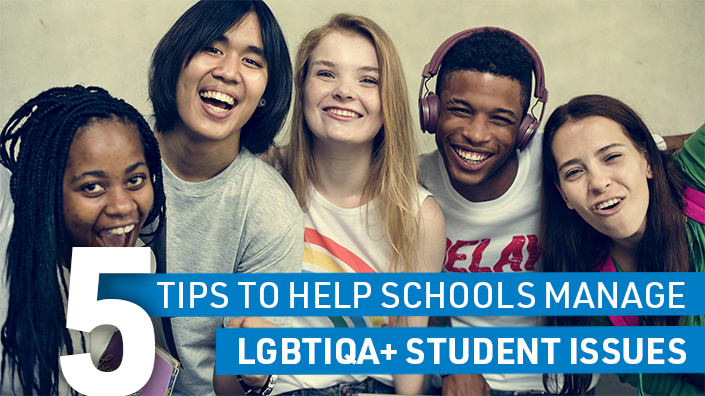Five Tips to Help Non-Government Schools Manage LGBTIQA+ Student Issues
Recently, there has been a lot of media attention on the way non-government schools manage issues relating to LGBTIQA+ students and prospective students. Public commentary often makes these issues seem fraught, complicated and intimidating. But they don’t have to be.
LGBTIQA+ stands for lesbian, gay, bisexual, transgender, intersex, queer and asexual, with the “+” acknowledging that there are many other diverse sexual orientations and gender identities.
Legal Research Consultant, Mark Bryan – writing for School Governance website – suggests keeping these five tips in mind to simplify LGBTIQA+ issues and incorporate them into the everyday business of school governance and compliance.
- Frame the Issue in Terms of Student Duty of Care.
Student duty of care is a legal concept which says that schools have a duty to take reasonable measures to protect students from risks of harm. LGBTIQA+ issues are no different to any other school governance and compliance. The central concerns are the safety and wellbeing of the student. - Understand the Terminology
There is some variation in LGBTIQA+ terminology. In his article, Mark relies on the terminology used in legislation and by the national youth mental health foundation, Headspace. - Understand Your Legal Obligations
Aside from student duty of care, the main legal obligations in regard to LGBTIQA+ students and prospective students relate to discrimination. Generally speaking, it is unlawful to discriminate against someone on the basis of their sexuality, gender identity or intersex status. “Discriminate” in this context means to treat a person “less favourably” than you would treat a different person in the same circumstances. - Make a List of Actions
There are many practical steps that schools can take to ensure they meet their duty of care and anti-discrimination obligations in regard to LGBTIQA+ students and prospective students. Some may suit your school and others may not, but here are some options to get you started:- appoint student wellbeing staff;
- provide diverse sexuality education to staff and students;
- develop partnerships with LGBTIQA+ community organisations; and,
- reach out to LGBTIQA+ staff and parents.
- Be Ready for Attention from the School Community and Media
If framed appropriately, LGBTIQA+ issues can be dealt with simply and methodically within the school governance context. Outside that context, however, these issues may be drawn into complex and highly publicised debates.
Outside of the school governance context, issues relating to LGBTIQA+ students and prospective students can be complex and controversial and are likely to remain so in Australia for some time. This is something that schools need to bear in mind, particularly when drafting communications strategies.
Within the school governance context, however, LGBTIQA+ issues are simpler than they first seem. In fact, to manage LGBTIQA+ issues you really only need to do one thing: implement clear policies that focus on student duty of care. This will help you to separate your immediate, practical obligations from the surrounding noise and incorporate LGBTIQA+ issues into the normal business of running your school.


